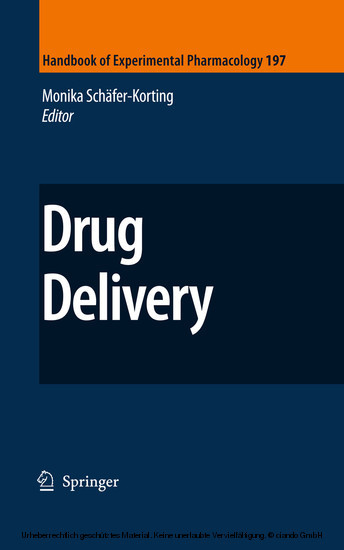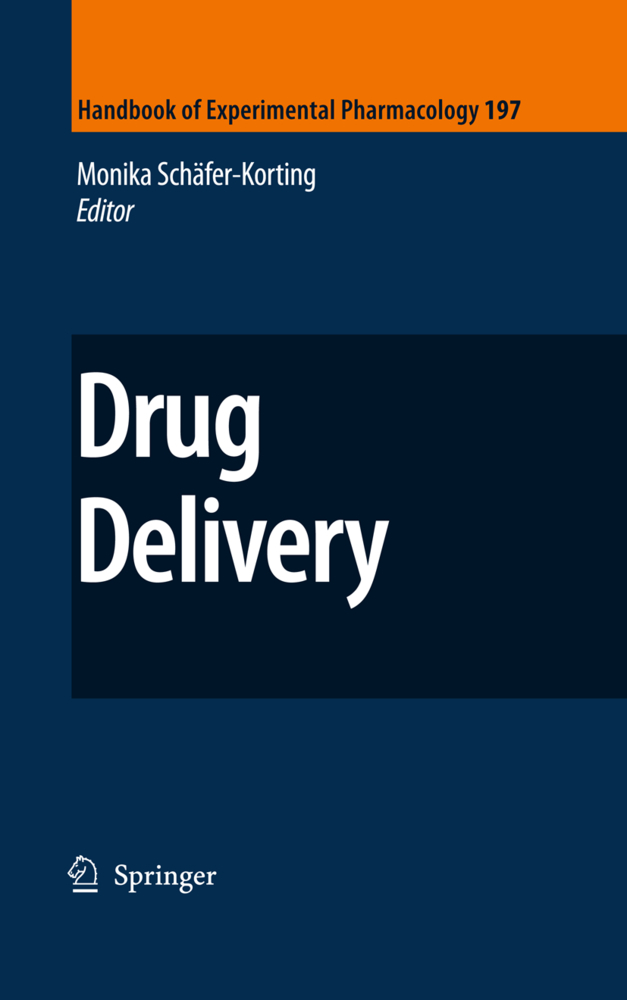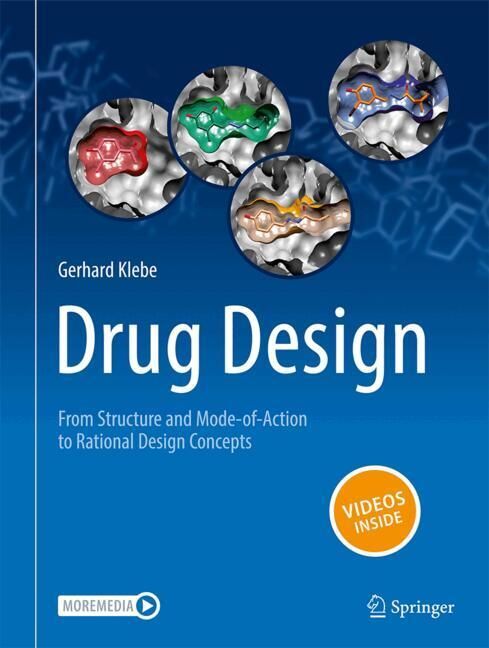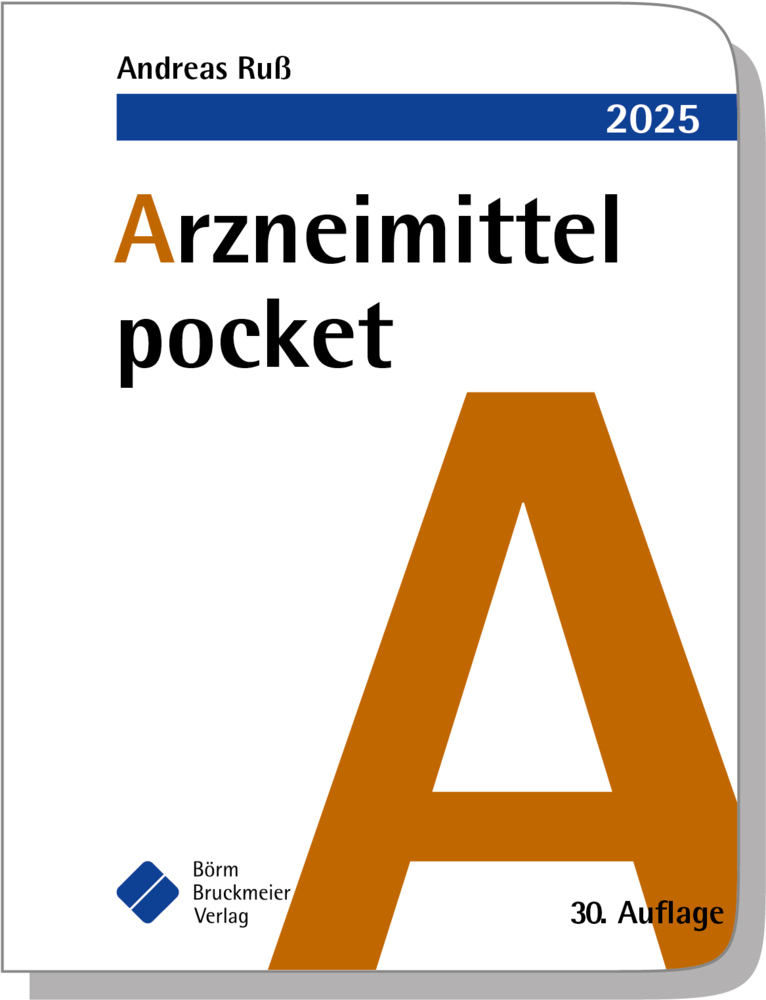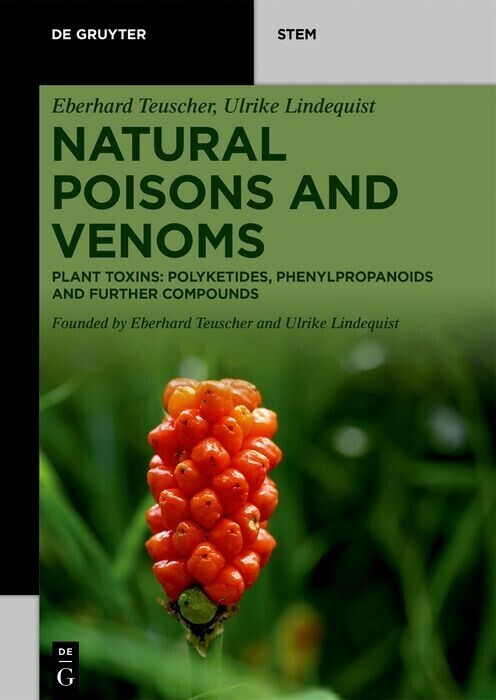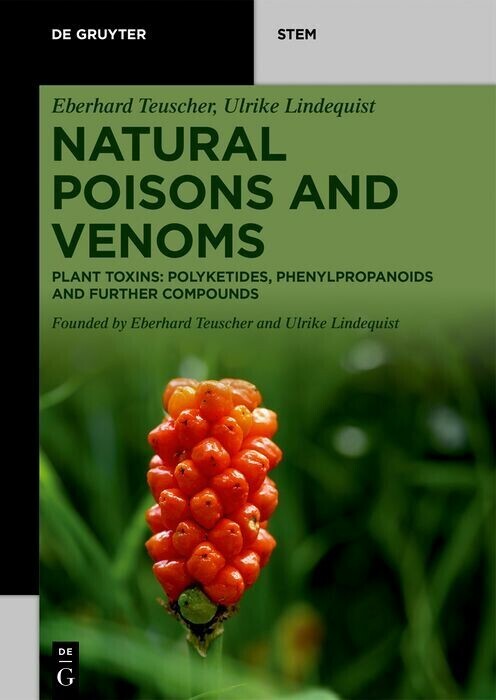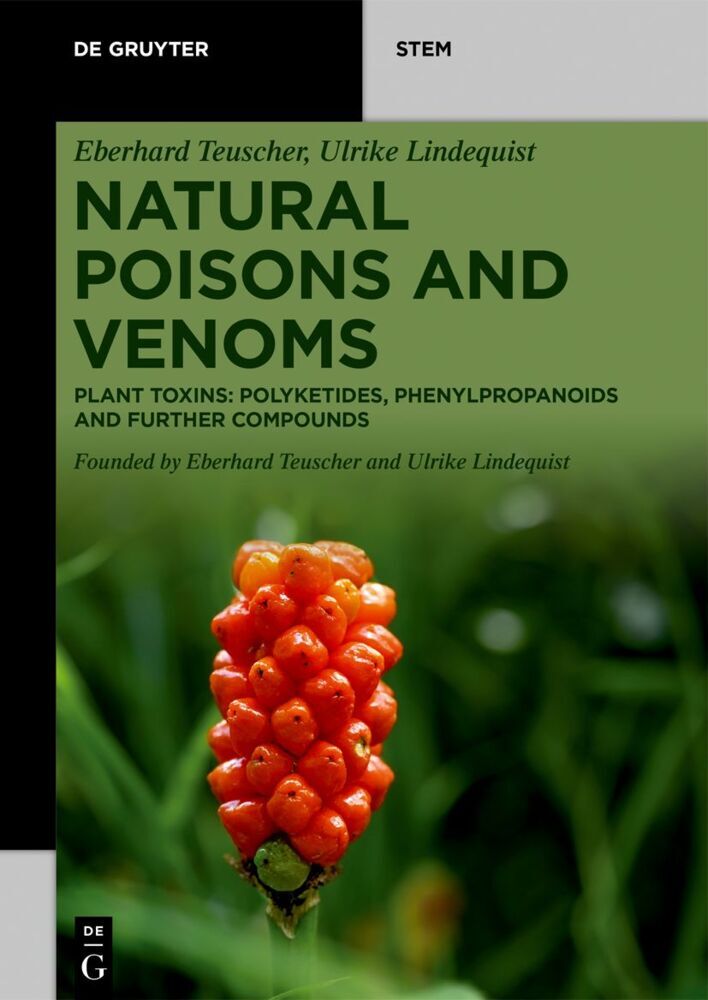Drug Delivery
Handbook of Experimental Pharmacology
In the view of most experts pharmacology is on drugs, targets, and actions. In the context the drug as a rule is seen as an active pharmaceutical ingredient and not as a complex mixture of chemical entities of a well defined structure. Today, we are becoming more and more aware of the fact that delivery of the active compound to the target site is a key. The present volume gives a topical overview on various modern approaches to drug targeting covering today's options for specific carrier systems allowing successful drug treatment at various sites of the body difficult to address and allowing to increase the benefit-risk-ratio to the optimum possible.
1;Preface;5 2;Contents;8 3;Part I Fundamentals;14 3.1;Passive and Active Drug Targeting: Drug Delivery to Tumors as an Example;15 3.1.1;Drug Targeting: General Considerations;16 3.1.2;Concepts of Passive and Active Targeting;18 3.1.3;Pharmaceutical Carriers: Liposomes and Micelles as Examples;22 3.1.4;Chemistry Used to Provide Pharmaceutical Nanocarriers with Various Functions;27 3.1.5;Longevity of Nanocarriers in the Blood and its Importance for Drug Delivery;29 3.1.6;Passive Accumulation of Liposomes and Micelles in Tumors;33 3.1.7;Active Tumor Targeting with Drug-Loaded Liposomes;38 3.1.8;Active Tumor Targeting with Drug-Loaded Micelles;45 3.1.9;Conclusion;47 3.1.10;References;48 3.2;Nanoparticle Technologies for Cancer Therapy;66 3.2.1;Introduction;67 3.2.2;Nanoparticle Technologies;70 3.2.2.1;Liposome Nanoparticles;72 3.2.2.2;Polymer-Drug Conjugates Nanoparticles;73 3.2.2.3;Polymeric Nanoparticles;74 3.2.2.4;Micelle Nanoparticles;75 3.2.2.5;Dendrimer Nanoparticles;76 3.2.2.6;Polymersome Nanoparticles;77 3.2.2.7;Protein Nanoparticles;77 3.2.2.8;Biological Nanoparticles;78 3.2.2.9;Inorganic Nanoparticles;78 3.2.2.10;Hybrid Nanoparticles;80 3.2.3;Strategies for Cancer Therapy Using Nanoparticles;81 3.2.3.1;Metastatic Cancer;81 3.2.3.2;Non-Targeted Nanoparticles;82 3.2.3.3;Targeted Nanoparticles;85 3.2.4;Summary;87 3.2.5;References;88 3.3;Biosensing and Drug Delivery at the Microscale;98 3.3.1;Progress and Challenges in Controlled Drug Delivery;99 3.3.2;Polymer Actuator for Controlled Drug Delivery;101 3.3.3;Complex Drug Releasing Systems for Synchronous Drug Delivery;103 3.3.4;A Novel Nanoscale Valve Responding to pH Changes May Allow a Targeted Drug Release;104 3.3.5;pH-Responsive Supramolecular Nano-valves;105 3.3.6;Electronically Controlled ``Smart´´ Pill;106 3.3.7;Novel Micro- and Nano-Mechanical Drug Delivery Implants;108 3.3.8;Highlights in Micro-Machined Biosensing Drug Delivery Devices;111 3.3.9;Novel Technological Challenges in Drug Delivery - Nano-Micro-Implants;114 3.3.10;Novel Aspects of Electronically Controlled Drug Delivery Systems;116 3.3.11;Biosensing of Drug Delivery in In Vitro Tissue Models;118 3.3.12;Biosensing of Drug Delivery In Vivo - Microelectrodes in Endoluminal Sensors;119 3.3.13;References;121 4;Part II Devices;124 4.1;Lipid Nanoparticles: Effect on Bioavailability and Pharmacokinetic Changes;125 4.1.1;Introduction;127 4.1.2;Definition of Lipid Nanoparticles (SLN vs. NLC);128 4.1.2.1;Solid Lipid Nanoparticles (SLN);131 4.1.2.2;Nanostructured Lipid Carriers (NLC);132 4.1.3;Effects of Lipid Polymorphism on API Bioavailability;133 4.1.4;Lipid Nanoparticles Applications;135 4.1.4.1;Oral Delivery;135 4.1.4.2;Pulmonary Delivery;138 4.1.4.3;Parenteral Delivery and Drug Distribution;140 4.1.4.4;Brain Targeting;141 4.1.5;Conclusions and Perspectives;144 4.1.6;References;144 4.2;Viral Vectors for Gene Transfer: Current Status of Gene Therapeutics;152 4.2.1;Gene Therapy: Definition and State of the Art;154 4.2.2;AAV Vectors for Gene Therapy;156 4.2.2.1;Overview of Properties;156 4.2.2.2;AAV Structure;157 4.2.2.3;AAV Life Cycle;157 4.2.2.4;Cell Receptors Used by AAV;158 4.2.2.5;AAV Vector Production;158 4.2.2.5.1;AAV Vector Production by Cotransfection of Packaging Plasmids;158 4.2.2.5.2;Upscaling of AAV Vector Production;159 4.2.2.5.3;AAV Vector Purification;161 4.2.2.5.4;Quantification of AAV Vector Yields;162 4.2.2.6;AAV Vector Persistence and Safety;163 4.2.2.7;AAV Split Vectors;164 4.2.2.8;Dimeric, Self-Complementary (sc) AAV Vectors;164 4.2.2.9;Cell Targeting Strategies for AAV;165 4.2.2.10;Future Directions;166 4.2.3;Retrovirus Vectors for Gene Therapy;166 4.2.3.1;Retrovirus Structure and Life Cycle;167 4.2.3.2;Design and Development of Oncoretroviral Vectors;167 4.2.3.3;Self-Inactivating (SIN) Oncoretroviral Vectors;168 4.2.3.4;Design and Development of Lentiviral Vectors;170 4.2.3.5;Safety of Retrovirus Integration;171 4.2.3.6;Production and Stability of Retroviral Vectors;172 4.2.3.7;Purification a
Schäfer-Korting, Monika
| ISBN | 9783642004773 |
|---|---|
| Artikelnummer | 9783642004773 |
| Medientyp | E-Book - PDF |
| Auflage | 2. Aufl. |
| Copyrightjahr | 2010 |
| Verlag | Springer-Verlag |
| Umfang | 501 Seiten |
| Sprache | Englisch |
| Kopierschutz | Digitales Wasserzeichen |

